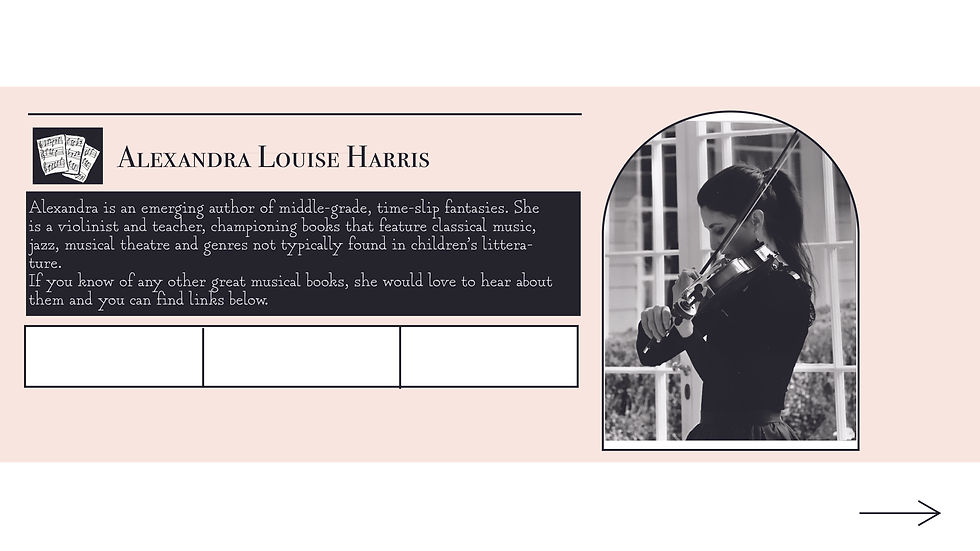Music appreciation starts at a young age
- Jul 17, 2021
- 4 min read
Updated: Aug 8, 2024
Excerpts from Mighty Muso - Musings behind Violetta's adventures for adult minds and readers.

Where is sound? When I imagine music as a visible thing, I see it existing in space. Music appreciation starts at a young age, and I've always imagined if I look up in the sky, it’s there in colours and textures, hanging out in the ether.
We’ve all heard of the ether before, but it can be a little bit hard to define. If you were a doctor or a pharmacist, you may be using it to clean something, or knock someone out before an operation. Then again, if you were a medium, you may be using it to channel or connect with spirits. There is also the ethernet—connecting computers and networks—and even something called an ‘ether radio,’ a wireless communication system developed in 1919.
To make matters even more confusing, it is often spelt ‘aether’, reminding me of alcohol—particularly that really potent green variety called absinthe and its less fancy relative; methylated spirits. Perhaps because absinthe starts with ‘a’.
Anyway, in physics, the definition according the Oxford Dictionary is thus:
‘A very rarefied and highly elastic substance formerly believed to permeate all space, including the interstices between the particles of matter, and to be the medium whose vibrations constituted light and other electromagnetic radiation.’
That’s a very wordy definition, and I’ll try to make sense of that later, but the dictionary also offers a literary definition as: ‘The clear sky; the upper regions of air beyond the clouds.’
Now, that’s probably what I’ve always imagined, like when you clean glass with ‘metho’—as we Australian’s call it—and the translucent rainbow colours appear and rapidly disappear. And if the glass was a substance made of clouds and silicone, I think that’s what would be there.
Turns out I wasn’t far wrong; ‘The postulated medium, was dubbed the ether, and it was supposed to combine the rigidity of glass with the lack of resistance characteristics of a very thin gas.’
Probably more convincing than ‘metho’ in a scientific debate.
Another person interested in the ether was a violinist, you’ve no doubt heard of, by the name of Albert Einstein. No? He was very good, often in high demand for dinner party entertainment? Oh, of course. He may be more commonly known for his scientific discoveries and one of them—his theory of relativity—unfortunately put an end to any formerly held notions of the ether.
You see, Einstein’s theory proved it mustn’t exist. Awe. I know. It had such a great name., and Einstein wasn’t keen to upset the waters to begin with either. Afterall, fan’s of his predecessor; Isaac Newton—or the Newtonion’s—had to stop wearing their seventeenth century, hand-printed t-shirts that said: ‘Newton’s aether rules.’
The problem was; the aether got too big for its boots.
‘The aether was supposed to be the absolute reference frame upon which one could measure all velocities...however, the aether began to assume more and more magical and bizarre properties...it was absolutely stationary, weightless, invisible, with zero viscosity, yet stronger than steel and undetectable by any other instrument.’
In other words, it was superman, or superwoman on steroids. Then some guys came along and conducted their Michelson-Morley experiment—proving to their disappointment that light travels with the same speed, even against a water current—and Einstein stepped in. He spoke a lot about clocks ticking at different times all across the universe, sound travelling faster through water, and heavy things gaining velocity the faster they went. (By the way, if you want to read more about that from someone who actually knows what they are talking about; check out the bibliography). So people started wearing new t-shirts that said; E=mc2. In fact, they are still wearing them; even though Einstein’s theory of relativity emerged some time ago, back in 1919.
But like anything with unique style—akin to ripped jeans, and 1980s mullets—the ether has been having a come-back. People have also been intrigued by the possibility of time-travel (one of my other great interests) for some time. It has inspired loads of books, movies and tv series, and there still is a vacuum up there, hoovering in ways that aren’t always obvious. Then there are black holes, wormholes and a time-space-continuum, bit’s of string and cats, the list is endless; and a teeny-tiny amount of it will be discussed in part four.
In the meantime, looking up has inspired all kinds of musicians. John Lennon, for example, when he wrote Lucy in the Sky with Diamonds. Although his world was a bit more colourful with tangerine trees, marmalade skies, green and yellow cellophane flowers, plasticine, and kaleidoscopes—it all sounds very possible to me. A little psychedelic too, which led me to think; perhaps music is the greatest drug of all, by allowing our minds to escape into space? Imagining colours, shapes and images out of what we hear? A bit like synesthesia—where music is perceived as colour.
What also interested a lot of physicists was what the universe would sound like. The Music of the Cosmos. Existing there in the clouds; a natural order of frequencies, organised into pitches, and some inaudible to human ears. Therefore, for this part of the book, we’ll explore a bit of that.
However, before we get down to it, one more natural element seems to be a super-source of music. Timber. We know violins can be worth millions of dollars, but what is it about wood that makes it so good?
“The postulated medium…” Lockwood, M. (2005). Labyrinth of Time: Introducing the Universe. Oxford: Oxford University Press.
“The vast ethereal…” Letter to Oldenburg (7 Dec 1675). In H. W. Turnbull (ed.), The Correspondence of Isaac Newton, 1661-1675 (1959), Vol. 1, 366.
“The ether was supposed to be…” Kaku, M. (2004). Einstein’s Cosmos: How Albert Einstein’s Vision Transformed our Understanding of Space and Time. London: Weidenfeld and Nicolson.





ความคิดเห็น